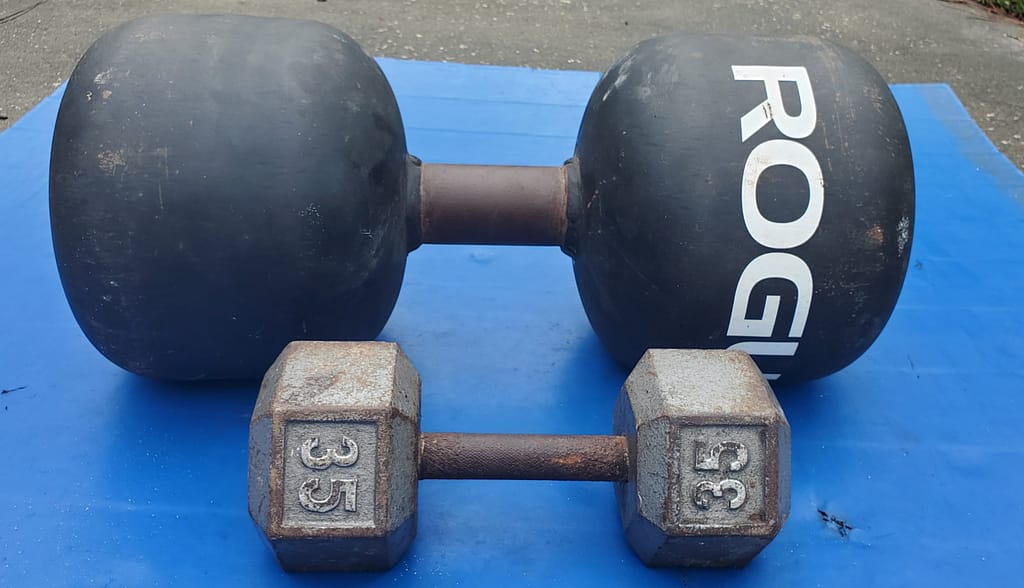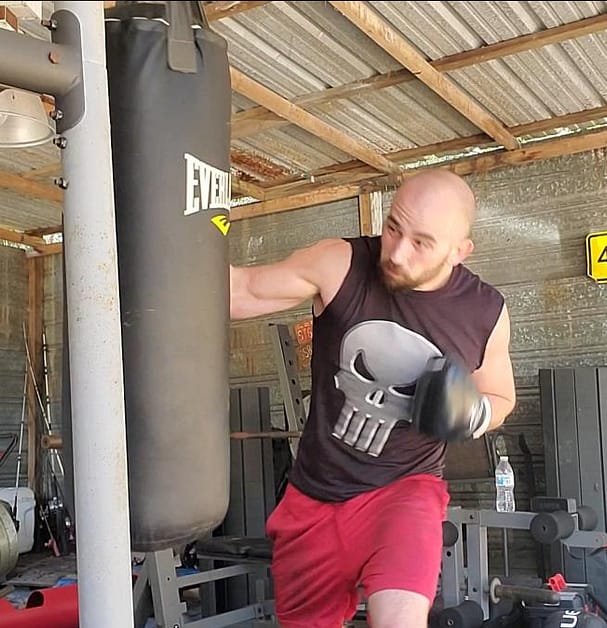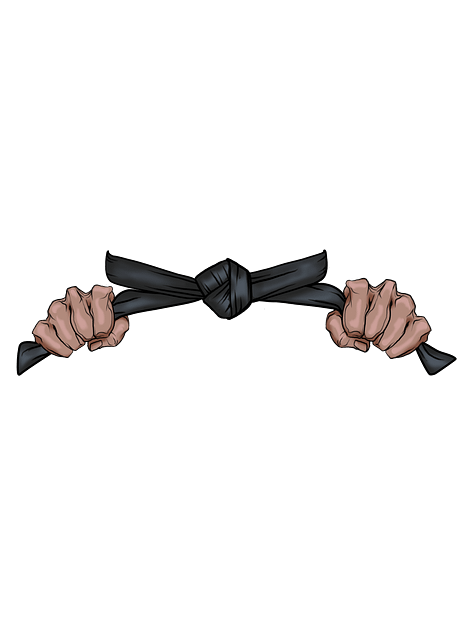Now, if you’ve read one of my articles before you could probably glean my love of strongman. I mean, what’s not to love about that sport? The largest men in the world lifting and carrying tremendous weights. Everything from car deadlifts, to log presses, to keg tosses. Add in the fact that the implements can weigh a ton (or several) and you’ve got a great viewing experience. It does beg the question, though, if training like a strongman is feasible and beneficial to average Joe. Well, you’re in luck- as an owner of several pieces of strongman gear, I’ll lay it on the line and tell you my opinion on strongman equipment, and if it’s worth the arm and leg you have to pay to get your hands on some.
Strongman Equipment Part One: The Sandbag

To start off, let’s touch on what’s ultimately a softball pitch, the sandbag. Yes, it’s worth it. Every penny. This is one piece of equipment that I’d recommend any person of any size. Not only is lifting and carrying uneven loads extremely common, but you can buy sandbags of varying sizes, materials, and weights.
Alright, let’s dive into this with a little more specificity. Strongman is a sport where odd object training is a must. Much like in life, the athletes have to pick up and carry, and sometimes run with, awkward equipment that’s heavy enough that dropping it on your foot may very well crush it into powder. Sadly, getting your hands on a hollowed out car for car lifts, kegs, and atlas stones isn’t really within reach for most people financially.
Not only do things like stones and kegs cost a pretty penny, but changing how much they weigh is either near impossible or actually impossible. However, the humble sandbag is both affordable and easily changes in weight depending on how much or how little you fill it with. In fact, it doesn’t even have to be sand. Plenty of people I know just use dirt to fill the bag. I bought the Ludus Imperium brand of sandbag for roughly a hundred bucks, and it’s rated to hold around two hundred and fifty pounds of weight when packed full. I’m not quite there yet strength wise, and since I use it mostly as a deadlift accessory I’ve only filled it to the weight mentioned above.
But will this carry over to other lifts?
Absolutely! The sandbag’s potential carryover for other lifts is massive. The dynamic and awkward resistance that comes with the sandbag is a great way to increase the strength of your hips, abs, and entire core/trunk area. And picking up and moving something that’s constantly shifting around will not let it sit in the most effective lever position like a barbell or dumbbell, and will teach you how to properly move and support such a heavy load by forcing you to brace and stabilize with each step, rep, or throw.
Strongman Equipment Part 2: The Log
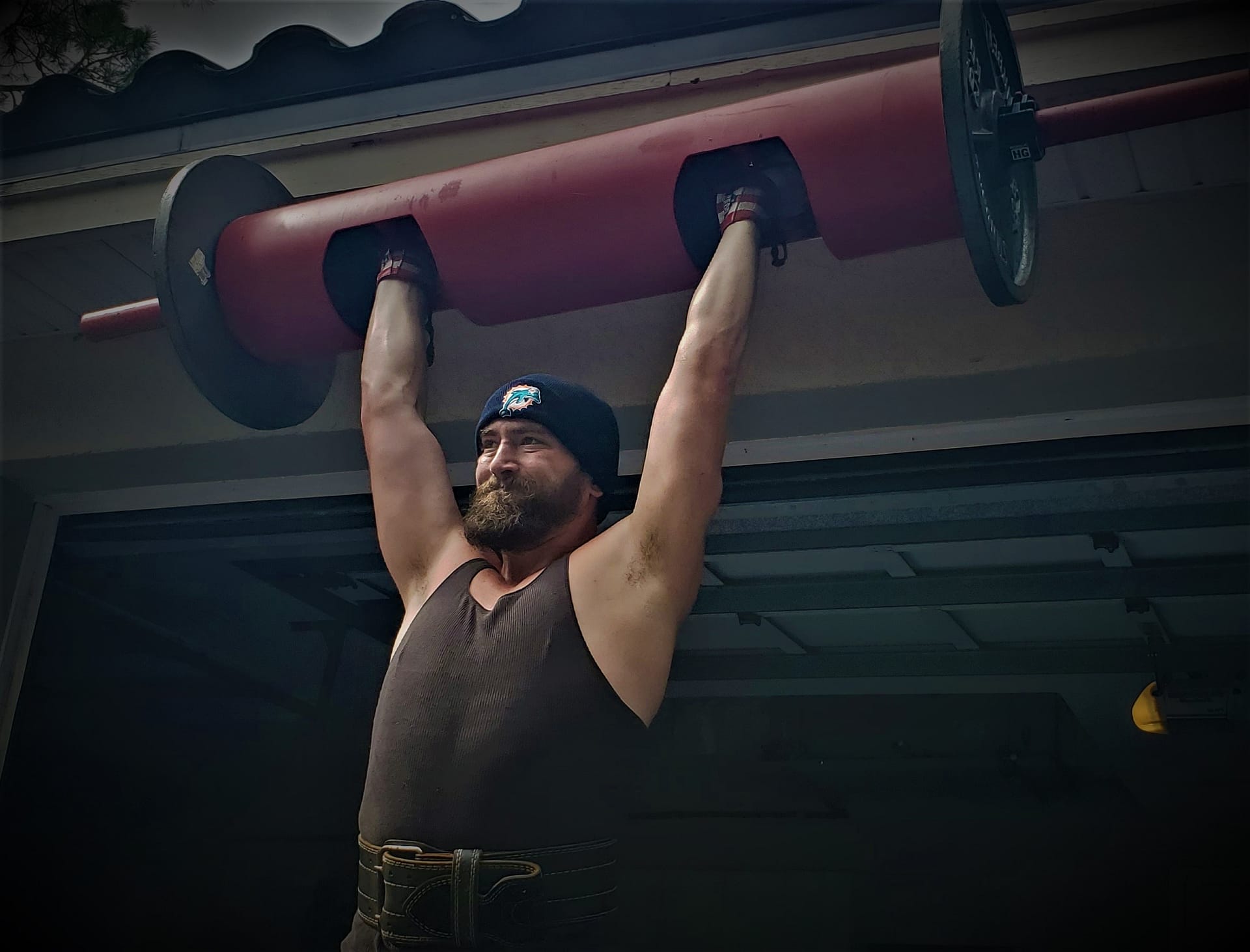
Now let’s veer into an exercise that’s usually unseen outside of strongman. Log pressing is a fine exercise, it’s very familiar in it’s motion and can be done a number of ways. You can clean it from the floor in one motion, press it from a rack, or lap it, clean it, and then push press it. Honestly, it’s a very technical lump of iron. At the minimum this is a two step lift, and that’s if the weight is light enough for you to clean it straight from the ground to your chest and press it in two motions. When it gets really heavy, this piece of strongman equipment is more like a four step lift: Deadlift, lap, clean, push press, control the negative, and repeat.
It’s a versatile piece of gear that, while more specialized than an all-encompassing lift like the sandbag carry, certainly has its uses in my mind.
Benefits of a log vs straight bar pressing
Let’s touch on the actual grip of a strongman log. The inside is hollow around the handles, which are positioned in such a way that you can easily and comfortably hold them in the rack position on your chest thanks to their neutral alignment. There’s no outward rotation of your hands so it’s actually much easier on your rotator cuff and all of the ligaments crowded into your shoulder area. I’ve had elbow and shoulder pain in the past on the straight bar, but not so for the log press.
And once again, you have the sheer awkwardness of the implement. I’ll try not to harp on this for every single piece of gear on here, but instability in your lifts is hard to get without injuring yourself. I’m not at all a proponent of lifting on things like bosu balls or exercise balls. Something like this, though, is big enough and weird enough that it contributes to strengthening things like the stabilizing muscles of your trunk as you clean and press it.
Though it may not be the case for everyone, I do feel like this has had some carry over to my bench. Much like the barbell push press, the hardest part of this lift is the lockout- which places a heavy load on your triceps for that few inches at the top.
To finish off this piece of equipment, you have the price point. I have one of the smaller log bars out there, with only about eight inches in diameter. And that ran me about 189.99 on amazon, which isn’t much more than you’d pay for a quality Olympic bar- in my mind, well worth the price.
Strongman Equipment Part 3: The Circus Dumbbell
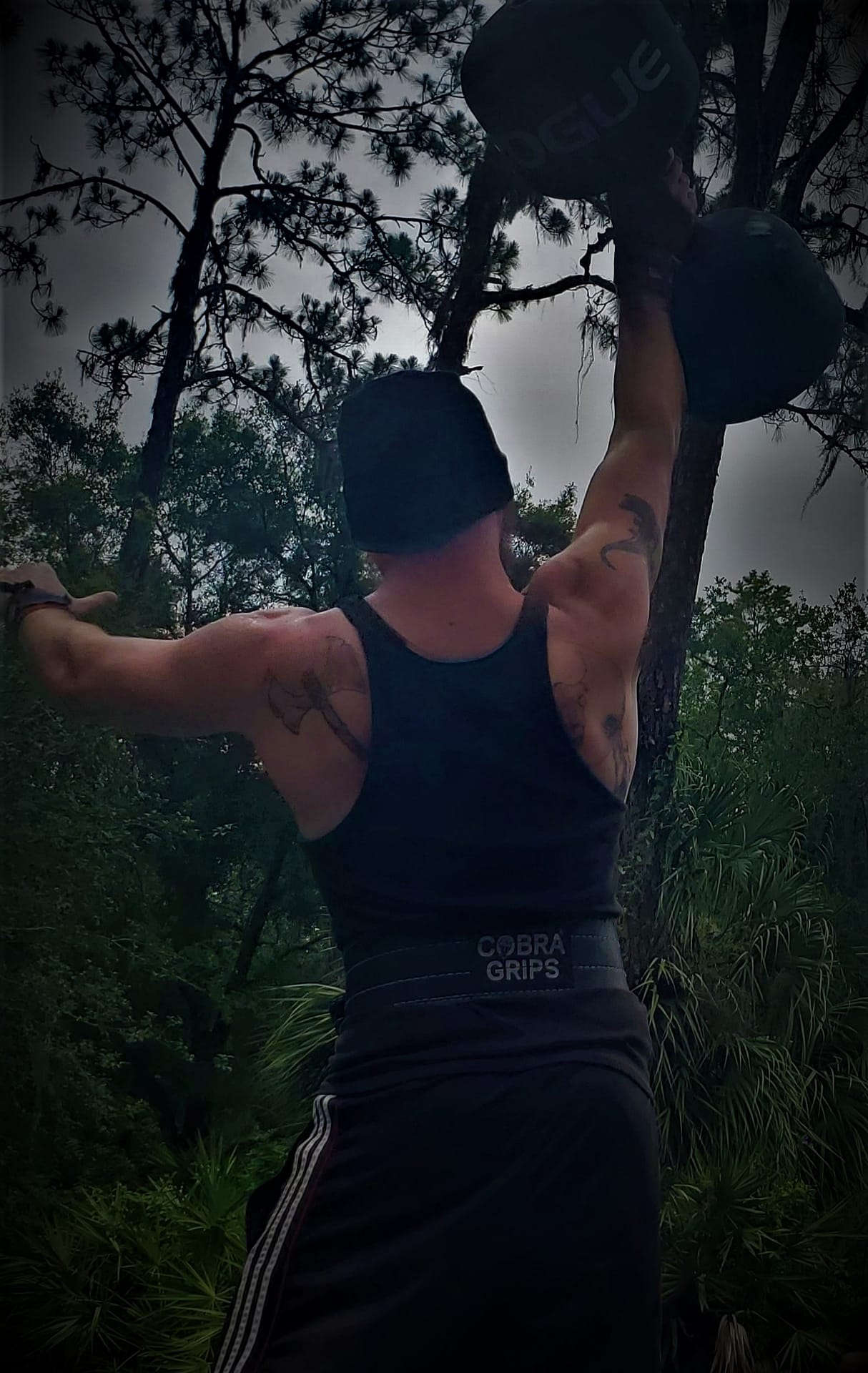
Alright, out the gate I already know I’m going to have a little more trouble justifying this one. In that image you can see me pressing my rogue fitness monster bell, aka the circus dumbbell. It’s about eighty six pounds unloaded, 10 inches in diameter, and can be loaded to up to two hundred pounds. It was a gift, and for it’s price point I couldn’t see myself getting it on my own, since it’s roughly six hundred bucks. Not only that, but this is a very technical lift, even more so than the log because it’s lopsided, and the potential for injury is very real with this particular piece of equipment.
But it does have carryover, right?
Oh, for sure. This is one of the oldest and most iconic strongman events out there. I tend to lift it in my driveway, as throwing something that heavy up over my head in my garage isn’t an appealing thought. And without fail, it’s an eye grabber. Not only is it a huge hunk of metal that you’re pushing up over your head, but the technique of the lift itself is very involved. And that’s where the carryover comes in.
For one, the handle on it is going to test your grip. You have to lift this two handed to your shoulder, and then hold it there with one hand. And then you’ll use more of an olympic clean-and-press motion to throw it up over head, throw your body underneath it, and catch it all full extension. Anecdotally, there’s some obvious potential for helping both your pressing and pulling movements. Not only that, but it’s just an explosive, taxing lift. I like to leave mine light and unloaded because it’s one of the truest tests of muscular endurance I’ve been through since wrestling in high school.
Strongman Equipment Part Four: The Safety Squat Bar
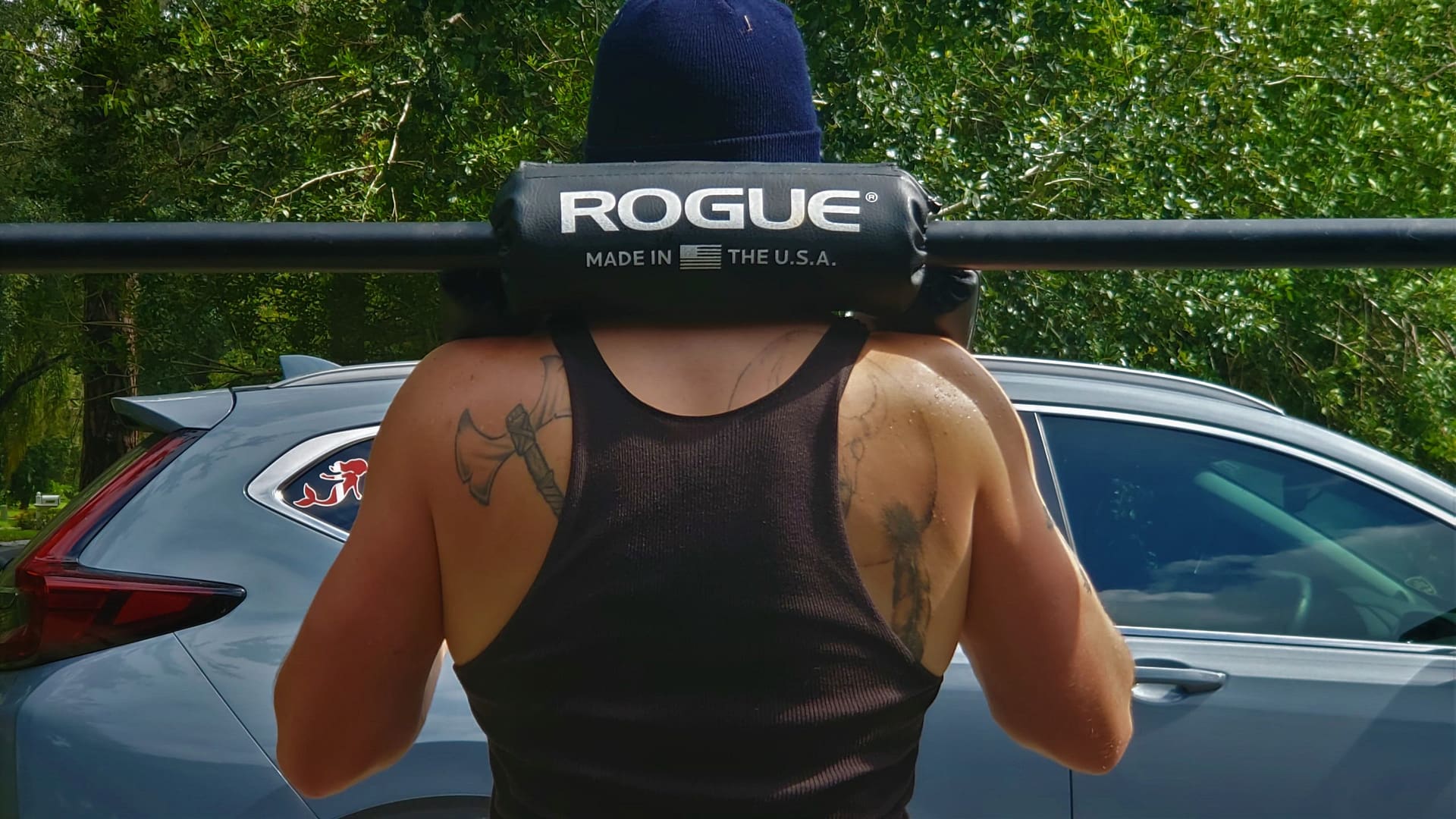
We’re going to bring this home with another layup. Since buying it two months ago, the Rogue fitness safety squat bar has become one of my favorite pieces of lifting equipment. And all it takes is a quick glance up above to see that I have quite a few toys in my home garage gym, so that’s no small piece of praise. As a lift, the safety squat falls somewhere between a traditional high-bar back squat and an anterior chain taxing front squat.
This is a specialty bar that’s very easy on your shoulder and elbow joints, something that may get in your way with a traditional back squat if you have any elbow or rotator cuff issues. Not only that, but it comes with padding thanks to it’s unusual resting position on the upper traps and back of the neck, with handles that jut forward for you to grab on either side of your neck.
This one must have tons of benefits, right?
I mean, I couldn’t even wait for the benefits section to start talking about how beneficial this bar is. Because while it’s very easy on the shoulders and elbows, it’s a monster on your entire posterior chain. In practice, it’s actually a bit more difficult to use than the traditional squat in that it’s a much more technical lift that requires keen awareness of back and neck position.
However, it’s carryover to the regular back squat and, unsurprisingly, the deadlift cannot be understated. Throughout the entire range of motion, the bar is trying to dump you forward. In response, you’re forced to keep your lats, traps, and low back tensed throughout the entire squat. Not only that, but the position of the handles make it much easier for me to hit depth, so I tend to get better work on my quads and glutes out of this bar than traditional squatting.
On top of that, it’s a great tool for using heavy weights on assistance exercises. Be they good mornings, walking lunges, or split squats. All similar assistance exercises have complications when it comes to using dumbbells and barbells and moving a significant amount of weight. With it’s handles, pads, and easy orientation, this bar has allowed me to significantly increase my lifts on such movements.
Conclusion
Should you buy strongman equipment for your own personal lifting and use? Well, it’s a mixed bag. A lot of this stuff is very specialized, which isn’t a bad thing if that’s what you’re looking for. On top of that, they’re very technical lifts that you’re going to be paying a premium to do. But as my final word on the subject, I’d say that a lot of this gear is very worth the steep price. So if you have the room, the cash, and the will- I’d say get a couple of these and try them out for yourselves. Also, buy a sandbag. There’s no reason to not have a sandbag.

